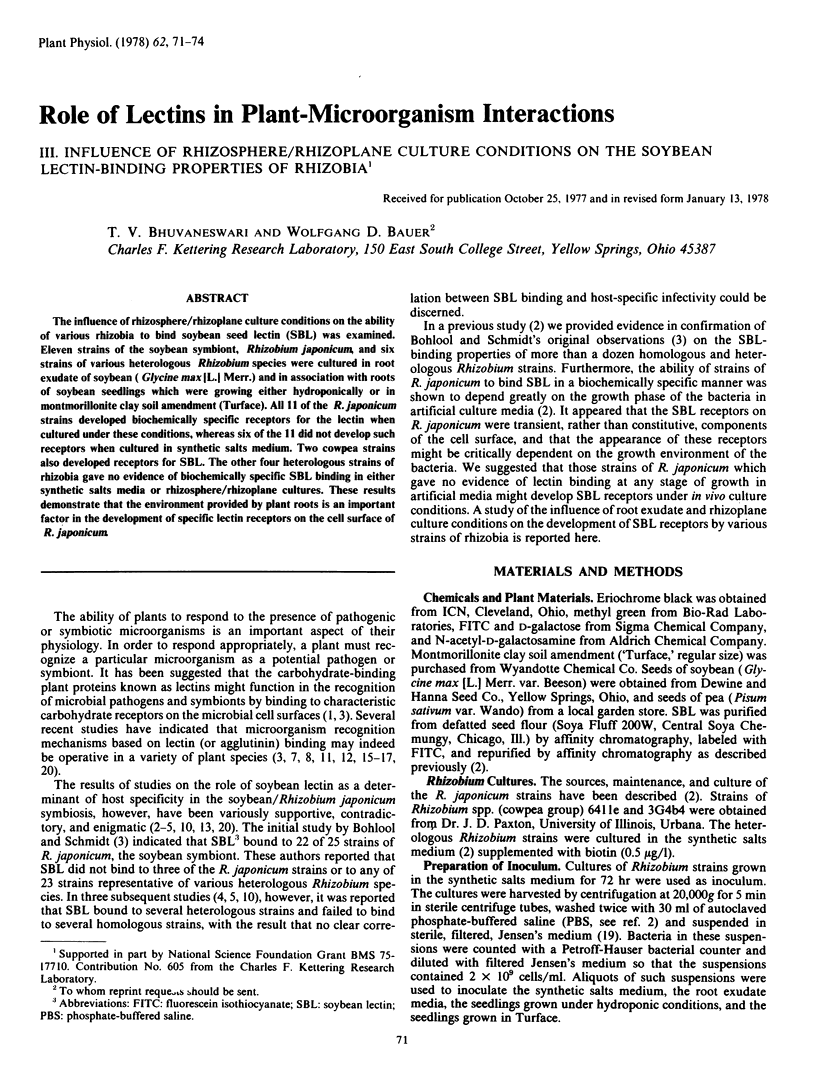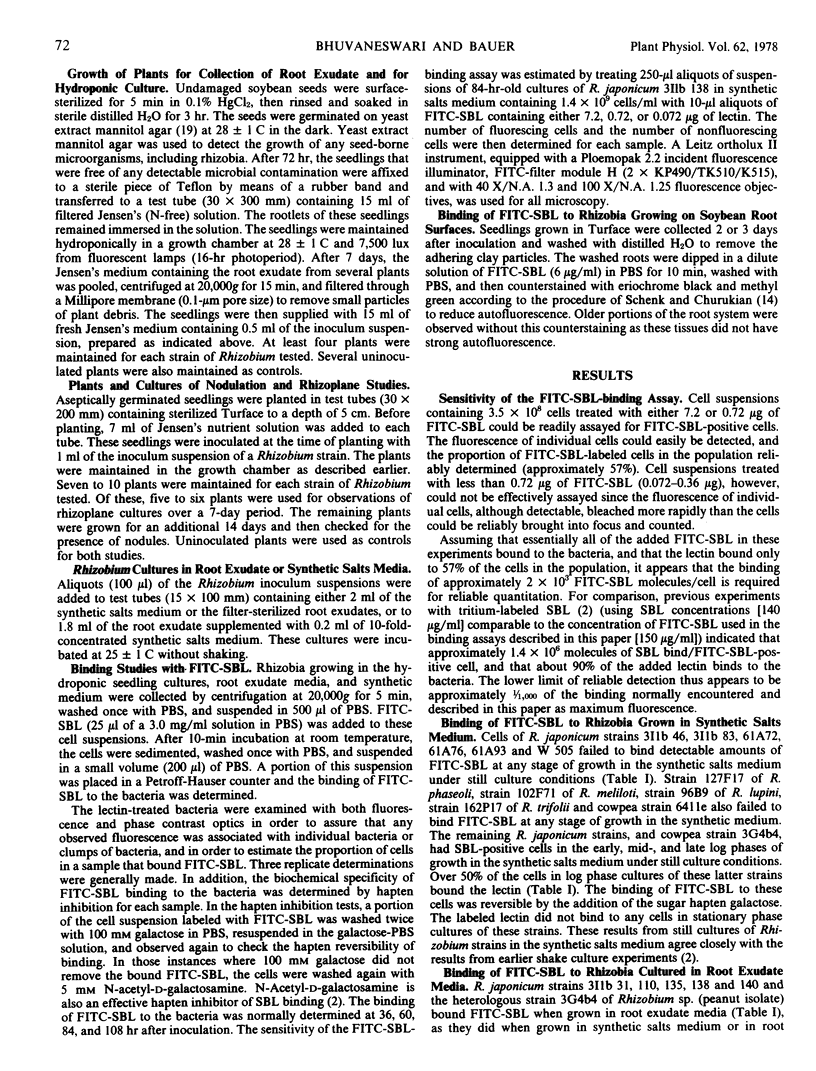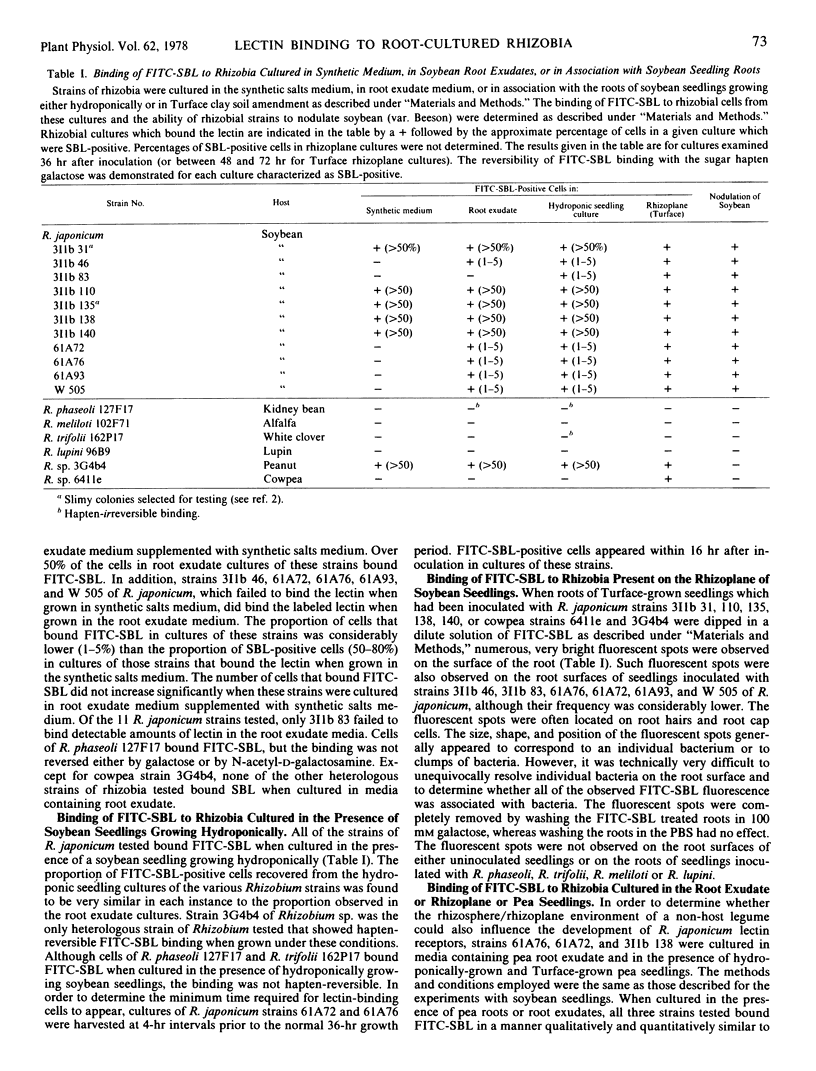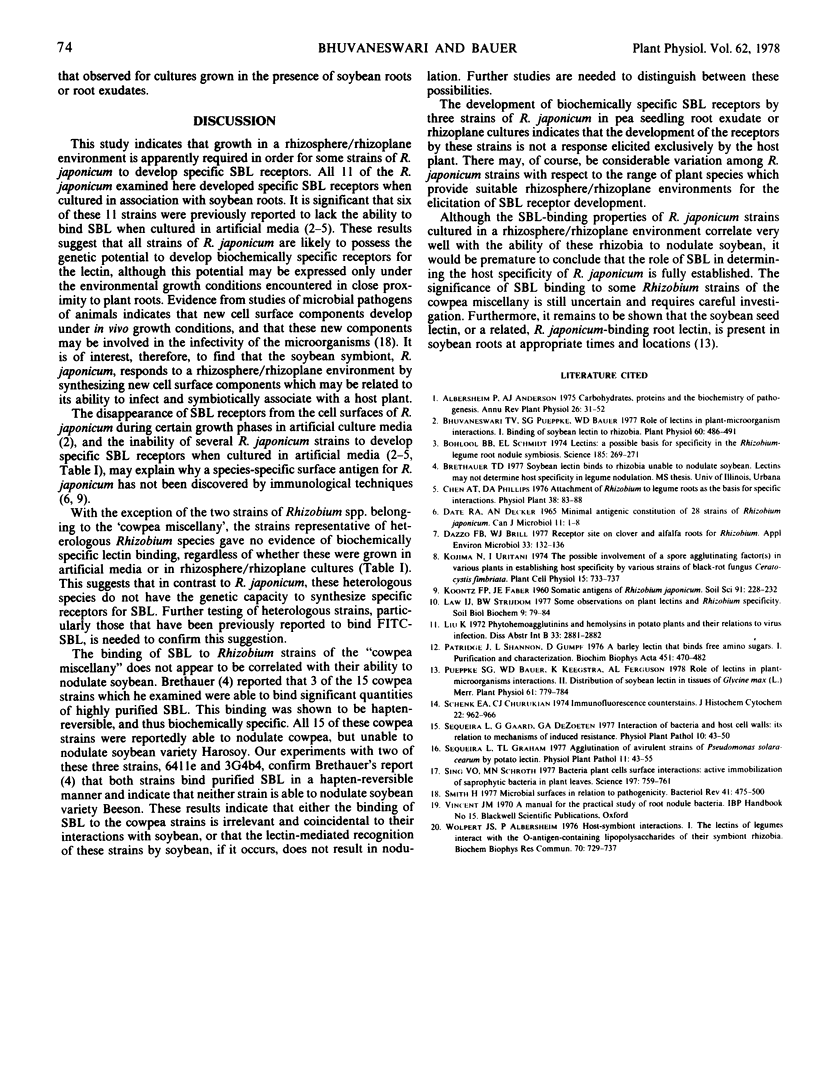Abstract
The influence of rhizosphere/rhizoplane culture conditions on the ability of various rhizobia to bind soybean seed lectin (SBL) was examined. Eleven strains of the soybean symbiont, Rhizobium japonicum, and six strains of various heterologous Rhizobium species were cultured in root exudate of soybean (Glycine max [L.] Merr.) and in association with roots of soybean seedlings which were growing either hydroponically or in montmorillonite clay soil amendment (Turface). All 11 of the R. japonicum strains developed biochemically specific receptors for the lectin when cultured under these conditions, whereas six of the 11 did not develop such receptors when cultured in synthetic salts medium. Two cowpea strains also developed receptors for SBL. The other four heterologous strains of rhizobia gave no evidence of biochemically specific SBL binding in either synthetic salts media or rhizosphere/rhizoplane cultures. These results demonstrate that the environment provided by plant roots is an important factor in the development of specific lectin receptors on the cell surface of R. japonicum.
Full text
PDF



Selected References
These references are in PubMed. This may not be the complete list of references from this article.
- Bhuvaneswari T. V., Pueppke S. G., Bauer W. D. Role of lectins in plant-microorganism interactions: I. Binding of soybean lectin to rhizobia. Plant Physiol. 1977 Oct;60(4):486–491. doi: 10.1104/pp.60.4.486. [DOI] [PMC free article] [PubMed] [Google Scholar]
- Bohlool B. B., Schmidt E. L. Lectins: a possible basis for specificity in the Rhizobium--legume root nodule symbiosis. Science. 1974 Jul 19;185(4147):269–271. doi: 10.1126/science.185.4147.269. [DOI] [PubMed] [Google Scholar]
- DATE R. A., DECKER A. M. MINIMAL ANTIGENIC CONSTITUTION OF 28 STRAINS OF RHIZOBIUM JAPONICUM. Can J Microbiol. 1965 Feb;11:1–8. doi: 10.1139/m65-001. [DOI] [PubMed] [Google Scholar]
- Dazzo F. B., Brill W. J. Receptor site on clover and alfalfa roots for Rhizobium. Appl Environ Microbiol. 1977 Jan;33(1):132–136. doi: 10.1128/aem.33.1.132-136.1977. [DOI] [PMC free article] [PubMed] [Google Scholar]
- Partridge J., Shannon L., Gumpf D. A barley lectin that binds free amino sugars. I. Purification and characterization. Biochim Biophys Acta. 1976 Dec 21;451(2):470–483. doi: 10.1016/0304-4165(76)90142-2. [DOI] [PubMed] [Google Scholar]
- Pueppke S. G., Bauer W. D. Role of Lectins in Plant-Microorganism Interactions: II. Distribution of Soybean Lectin in Tissues of Glycine max (L.) Merr. Plant Physiol. 1978 May;61(5):779–784. doi: 10.1104/pp.61.5.779. [DOI] [PMC free article] [PubMed] [Google Scholar]
- Schenk E. A., Churukian C. J. Immunofluorescence counterstains. J Histochem Cytochem. 1974 Oct;22(10):962–966. doi: 10.1177/22.10.962. [DOI] [PubMed] [Google Scholar]
- Sing V. O., Schroth M. N. Bacteria--plant cell surface interactions: active immobilization of saprophytic bacteria in plant leaves. Science. 1977 Aug 19;197(4305):759–761. doi: 10.1126/science.197.4305.759. [DOI] [PubMed] [Google Scholar]
- Smith H. Microbial surfaces in relation to pathogenicity. Bacteriol Rev. 1977 Jun;41(2):475–500. doi: 10.1128/br.41.2.475-500.1977. [DOI] [PMC free article] [PubMed] [Google Scholar]
- Wolpert J. S., Albersheim P. Host-symbiont interactions. I. The lectins of legumes interact with the o-antigen-containing lipopolysaccharides of their symbiont Rhizobia. Biochem Biophys Res Commun. 1976 Jun 7;70(3):729–737. doi: 10.1016/0006-291x(76)90653-7. [DOI] [PubMed] [Google Scholar]


